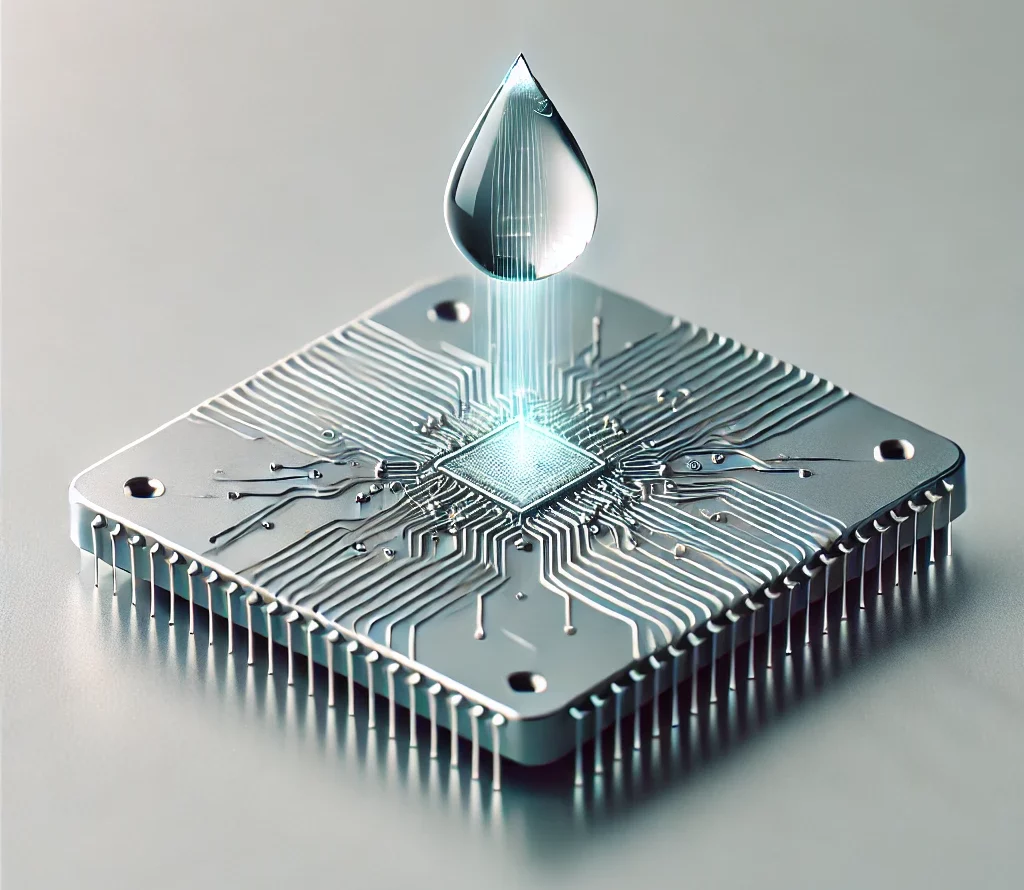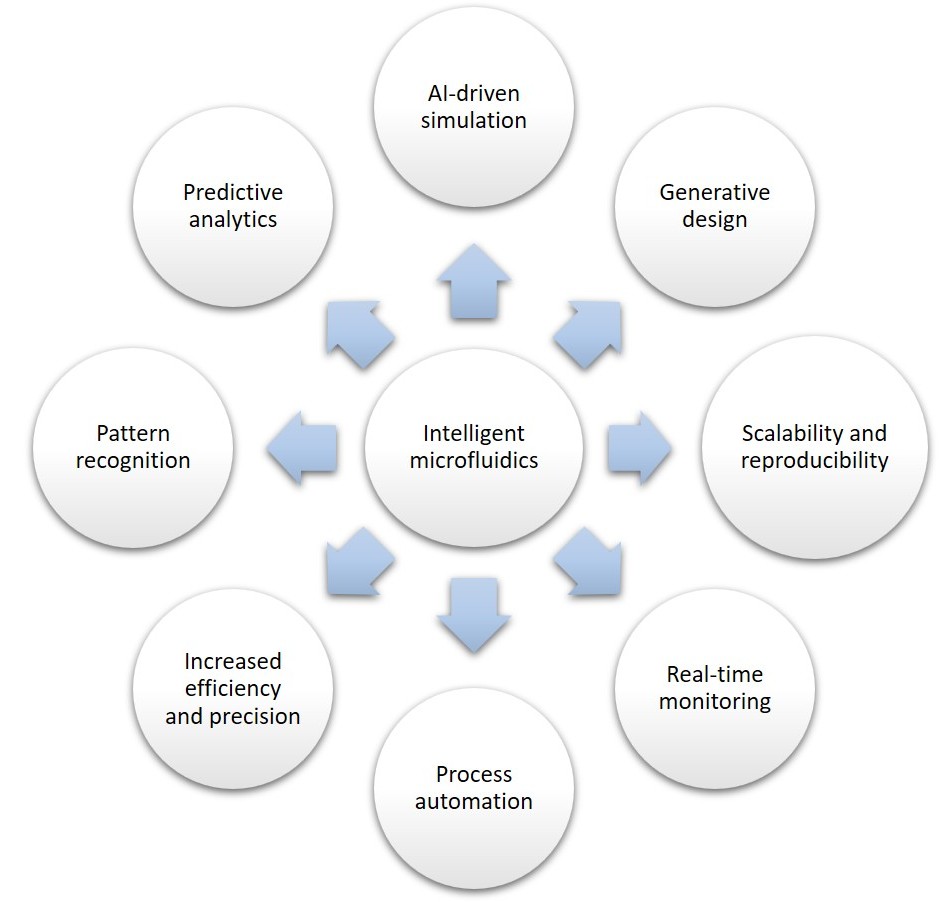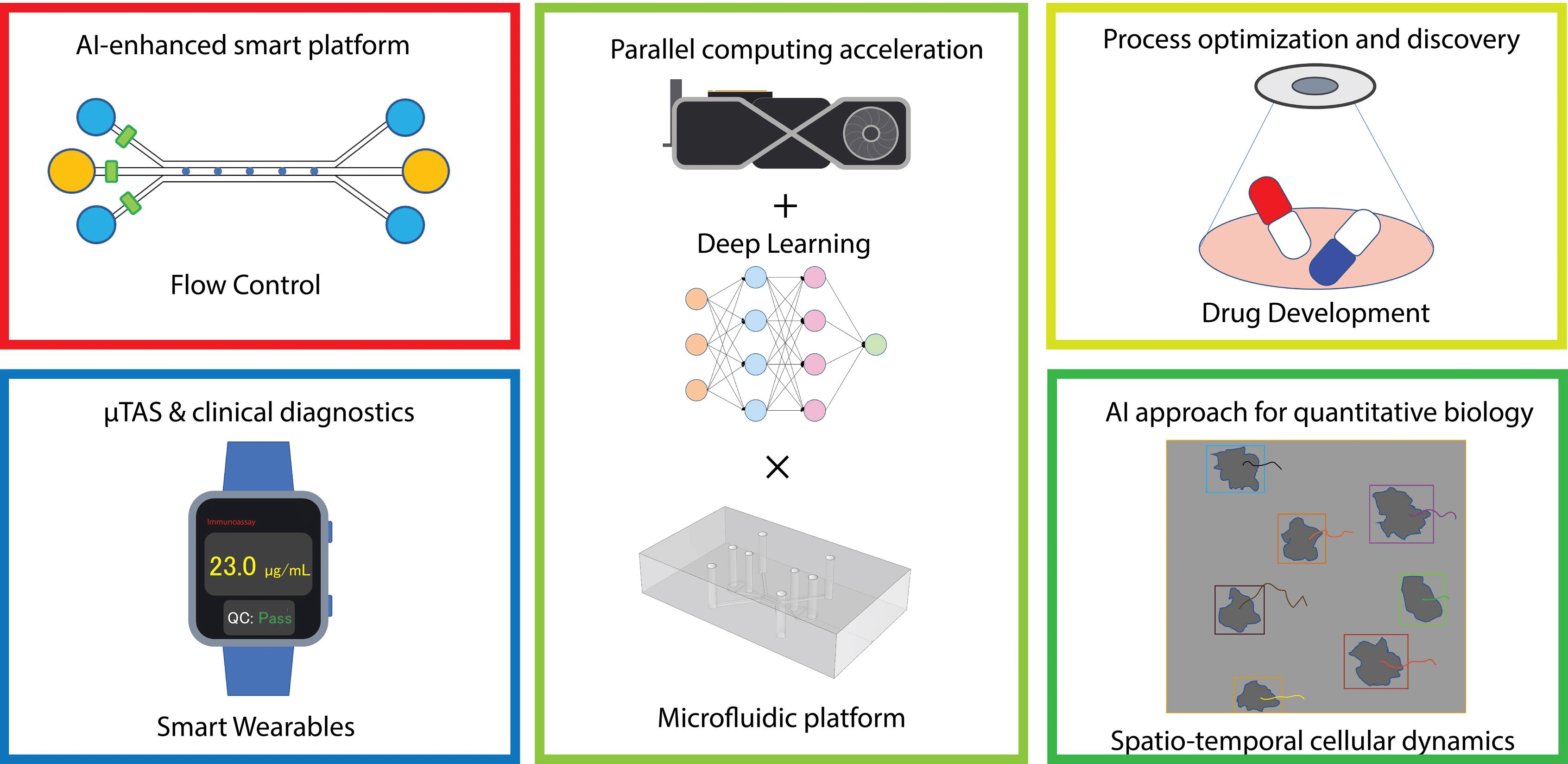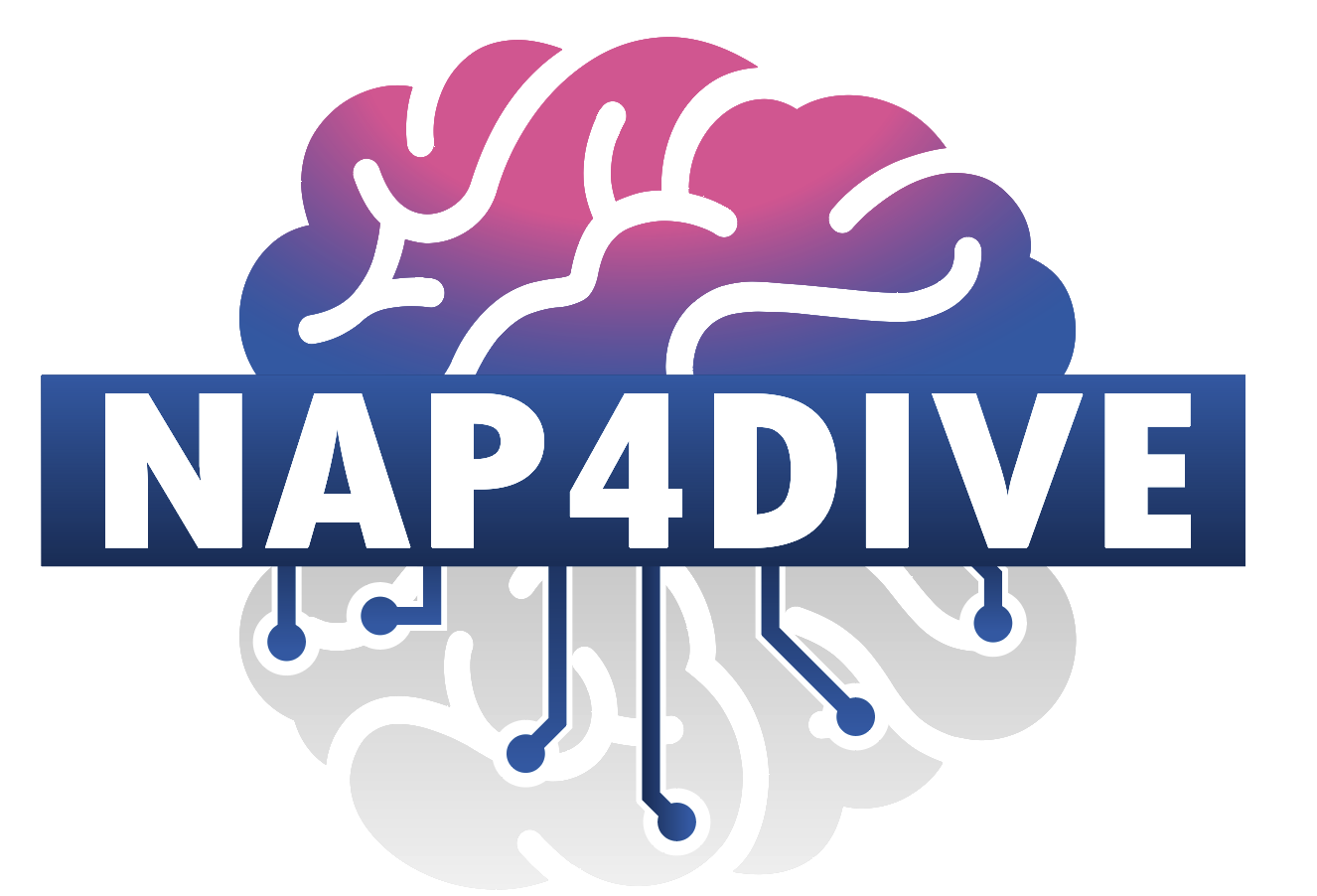AI-based microfluidic: Intelligence in every drop
Microfluidics has revolutionized biomedical research by enabling precise manipulation of small fluid volumes on miniaturized platforms. These lab-on-a-chip devices have significantly contributed to diagnostics, drug discovery, and synthetic biology. However, integrating artificial intelligence (AI) is taking microfluidics to the next level, transforming them from passive fluid control devices into intelligent platforms capable of real-time decision-making. AI-based microfluidic systems are paving the way for faster, more efficient, and highly scalable scientific and medical applications.

The evolution of AI-based microfluidics
Traditionally, microfluidic devices were designed to passively manipulate fluids, relying on pre-set configurations and manual control. While these systems allowed for miniaturization and high-throughput testing, their capabilities were limited by static workflows and the need for human intervention. Introducing AI, particularly machine learning (ML) and deep learning (DL), has changed this paradigm. AI-based microfluidic systems are able to learn from experimental data, optimize fluid flow dynamics, automate processes, analyze complex biological and chemical data, and adapt to changing conditions without direct human control (Figure 1).

Applications of AI-based microfluidics
AI-based microfluidics is making an impact in several key areas (Figure 2):
- Flow control – Traditional microfluidic systems rely on precise manipulation of small fluid volumes, often requiring intricate control mechanisms. AI-powered flow control enhances the accuracy and adaptability of these platforms by dynamically adjusting flow rates in real-time, optimizing processes such as chemical reactions, drug screening, and cell sorting.
- Parallel computing – DL models can analyze large datasets generated by microfluidic experiments in real-time. AI can process images, detect patterns, and optimize experiments at unprecedented speeds. This capability is particularly beneficial for applications such as high-throughput screening, single-cell analysis, and lab-on-a-chip technologies, where vast amounts of data are generated and require rapid processing.
- Point-of-care diagnostics – AI-based microfluidics enables the development of smart wearables that provide real-time health monitoring. For example, microfluidic biosensors embedded in wearable devices can analyze sweat, blood, or interstitial fluids to detect biomarkers related to diseases or metabolic conditions. These systems can even detect diseases early and predict their progression, enabling personalized medicine.
- Drug development – Traditional drug development is time-consuming and resource-intensive, often involving extensive trial-and-error processes. AI-based microfluidic platforms can streamline drug screening by predicting molecular interactions and evaluating drug efficacy, significantly reducing development time and costs. AI also aids in analyzing vast datasets to identify promising drug candidates.
- Quantitative biology – AI-powered image processing and pattern recognition techniques allow researchers to track and analyze cellular behavior over time with high precision. This is particularly valuable for understanding complex biological processes such as cell migration, differentiation, and interactions in microfluidic environments.

Challenges and future directions
Despite its promise, AI-based microfluidics faces challenges, including the need for explainable AI models, high-quality training datasets, and seamless data integration. Many AI models function as “black boxes,” making their decision-making processes difficult to interpret. This lack of transparency can be a concern in medical and regulatory applications. Researchers are actively working on improving AI model interpretability and developing robust validation frameworks to ensure reliability.
Looking ahead, intelligent microfluidics is set to revolutionize fields like healthcare, synthetic biology, and environmental monitoring. As AI algorithms become more advanced and data collection methods improve, we can expect even greater automation, precision, and accessibility in microfluidic applications. The synergy between AI and microfluidics is not just enhancing current capabilities—it is redefining the future of scientific discovery and medical diagnostics.
Microfluidics is not just micro - it’s intelligent!
The integration of AI into microfluidics marks a major leap forward in lab-on-a-chip technology. With the ability to automate processes, optimize experiments, and provide real-time insights, AI-based microfluidics is set to play a crucial role in the future of healthcare and research. As advancements continue, we can anticipate even smarter, more adaptive systems that will push the boundaries of what’s possible in diagnostics, drug discovery, and personalized medicine. The future of microfluidics is not just micro—it’s intelligent.
Want to know more on this subject? Check the extended review about AI use in microfluidic systems.
Funding and Support
This mini review was written under the European Union’s Horizon research and innovation program under HORIZON-HLTH-2024-TOOL-05-two-stage, grant agreement No. 101155875 (NAP4DIVE)


This review was written by Celeste Chidiac, PhD.
Published in March 2025.
Contact: Partnership[at]microfluidic.fr

References
- Tsai, H.F., S. Podder, and P.Y. Chen, Microsystem Advances through Integration with Artificial Intelligence. Micromachines (Basel), 2023. 14(4).